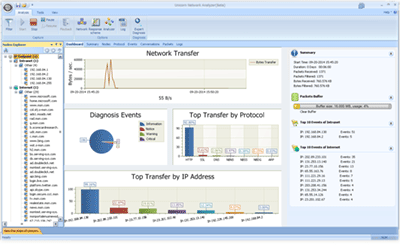Hello, this is the Network Technology Alliance Station, including the keyword Cisco Packet Tracer.
As network engineers, everyone must have used various simulators. When starting out, everyone chooses a vendor for systematic learning. After entering the workplace, due to project reasons, you will come into contact with various vendors’ equipment. At this time, the best way to quickly familiarize yourself with their commands is to use simulators adapted to the relevant vendors to simulate experiments. So, what simulators are commonly seen in the market? Today, Brother Rui will help you understand better!
1. Cisco Packet Tracer
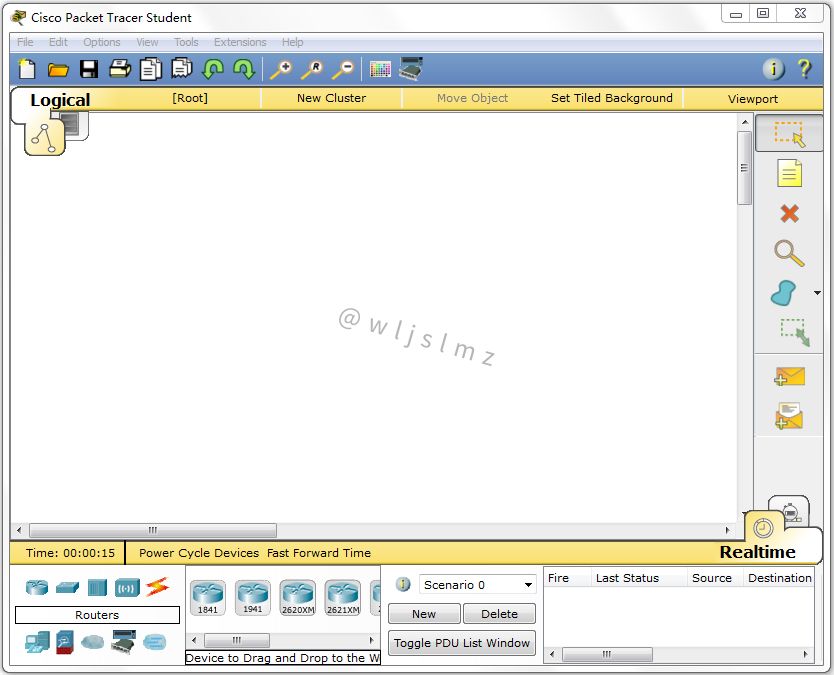
Cisco Packet Tracer is a learning tool published by Cisco that provides a network simulation environment for beginners learning Cisco network courses to design, configure, and troubleshoot network faults. Users can create network topologies by directly using the drag-and-drop method on the software’s graphical user interface and observe the detailed processing of packets traveling in the network in a real-time operational environment. You can learn IOS configuration and develop troubleshooting skills.
The latest version of Cisco Packet Tracer is currently Packet Tracer 8.1. Cisco has added several new routers and features such as ASA firewalls and IPv6 support.
Official Website of Cisco Packet Tracer
https://learningnetwork.cisco.com/s/packet-tracer-alternative-lab-solutions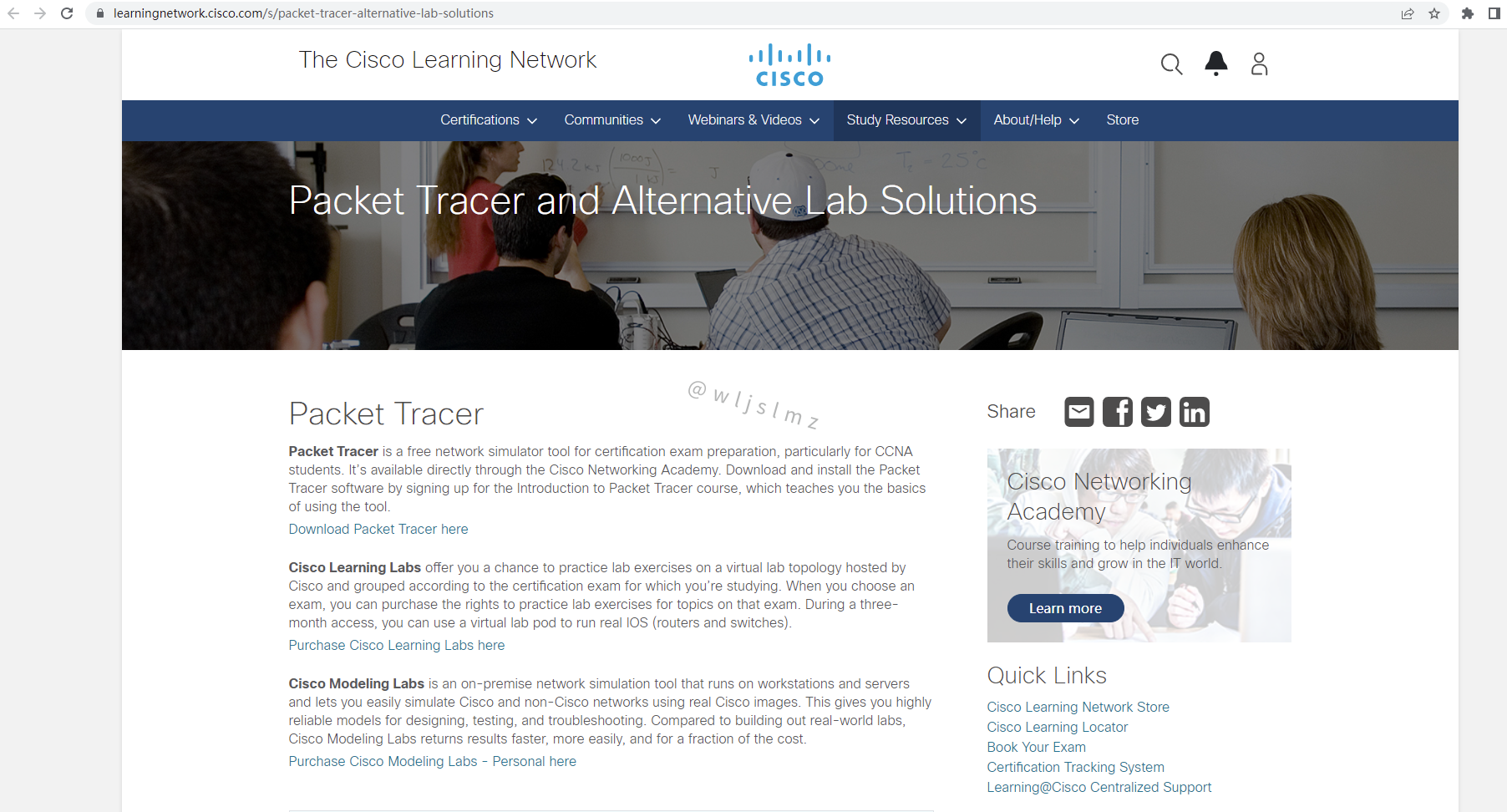
The download link will be placed at the end of this article, providing a Chinese version for your convenience.
2. Cisco Packet Tracer
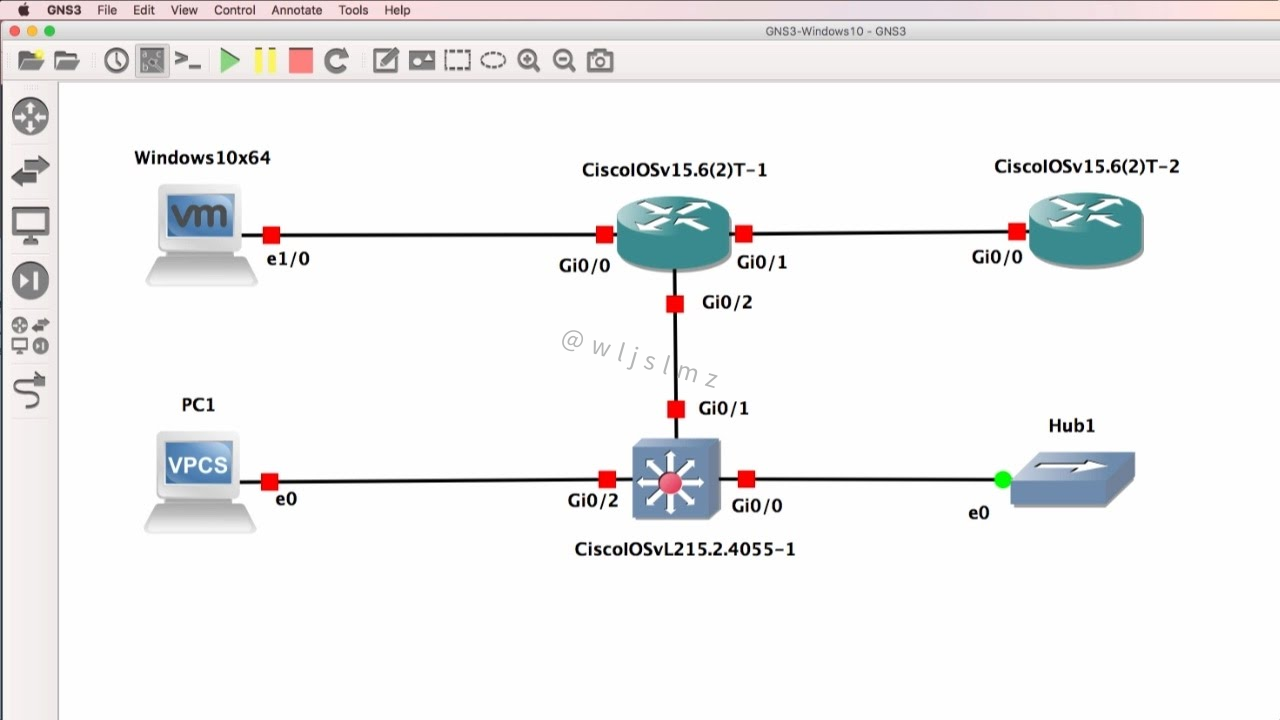
GNS3 is a network simulation software with a graphical interface that can run on multiple platforms (including Windows, Linux, and MacOS) and simulate hardware platforms of different network devices such as Cisco and Juniper. It can also help users with certification studies, such as Cisco’s CCNA, CCNP, CCIP, CCSP, CVP, and CCIE, among others. If you want to study for Cisco or Juniper certification exams, or if you want to test a particular topology you created, you can try GNS3.
GNS3 has built-in Chinese language support, making it very friendly for users in China, and supports the simulation of devices such as routers and switches, allowing users to experience the effects of switches and routers in a network environment.
Official Website of Cisco Packet Tracer
https://www.gns3.com/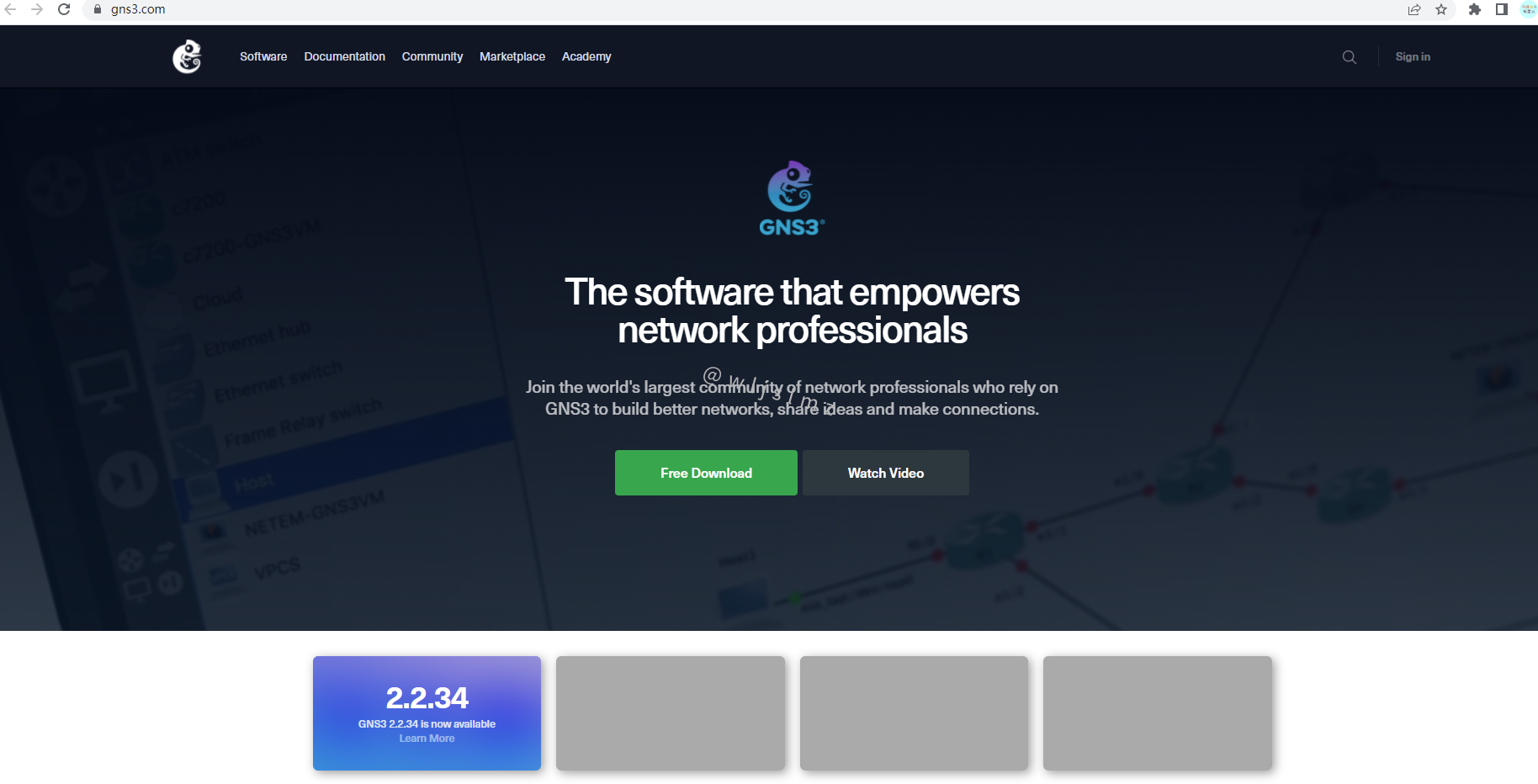
The latest version currently is 2.2.34.
You can download it from this interfacehttps://www.gns3.com/software/download:
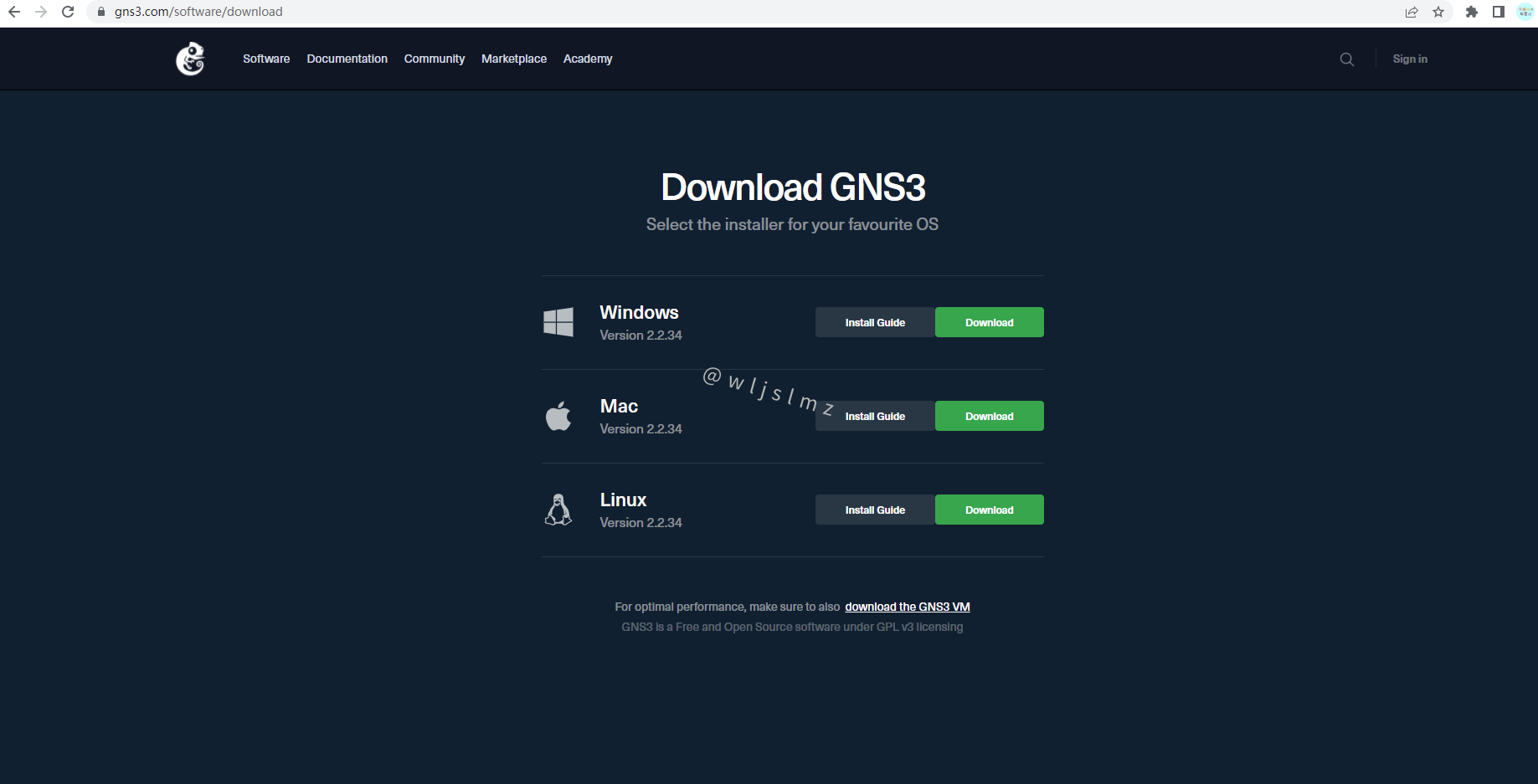
Note: A registered account is required to download from the official website.
As shown, it supports Windows, Linux, and Mac systems. If the internet speed is not great, you can also obtain it at the end of the article (providing Windows and Mac installation packages).
Installing Linux with Cisco Packet Tracer
Based on Ubuntu distributions (64-bit only)
Ubuntu and all its derivatives (such as Linux Mint):
sudo add-apt-repository ppa:gns3/ppa
sudo apt update
sudo apt install gns3-gui gns3-serverIOU support:
sudo dpkg --add-architecture i386
sudo apt update
sudo apt install gns3-iouInstall Docker CE (Xenial_and_newer):
sudo apt remove docker docker-engine docker.io
sudo apt-get install apt-transport-https ca-certificates curl \ software-properties-common
curl -fsSL https://download.docker.com/linux/ubuntu/gpg | sudo apt-key add -
sudo add-apt-repository \
"deb [arch=amd64] https://download.docker.com/linux/ubuntu \
$(lsb_release -cs) stable"
sudo apt update
sudo apt install docker-ce
ubridge libvirt kvm wireshark dockerBased on Debian distributions (64-bit only)
For Debian Jessie, add the following lines to your /etc/apt/sources.list:
deb http://ppa.launchpad.net/gns3/ppa/ubuntu trusty main
deb-src http://ppa.launchpad.net/gns3/ppa/ubuntu trusty main
sudo apt-get update
sudo apt-get install -y gns3-gui gns3-serverFor Debian Stretch, add the following lines to your /etc/apt/sources.list:
deb http://ppa.launchpad.net/gns3/ppa/ubuntu xenial main
deb-src http://ppa.launchpad.net/gns3/ppa/ubuntu xenial main
**The python libraries for this are broken, it will not work **For Debian Buster, refresh your metadata and install the following packages:
sudo apt update
sudo apt install -y python3-pip python3-pyqt5 python3-pyqt5.qtsvg \
python3-pyqt5.qtwebsockets \
qemu qemu-kvm qemu-utils libvirt-clients libvirt-daemon-system virtinst \
wireshark xtightvncviewer apt-transport-https \
ca-certificates curl gnupg2 software-properties-commonInstall GNS3 from Pypi:
pip3 install gns3-server
pip3 install gns3-guiNext, we will continue to install docker, import the Docker GPG key:
curl -fsSL https://download.docker.com/linux/debian/gpg | sudo apt-key add -(As of October 10, 2019, Buster needs to use the “edge” repo)
sudo add-apt-repository \
"deb [arch=amd64] https://download.docker.com/linux/debian \
$(lsb_release -cs) \
stable edge" Refresh your metadata, and then install docker:
sudo apt update
sudo apt install -y docker-ce Add the following lines to your /etc/apt/sources.list:
deb http://ppa.launchpad.net/gns3/ppa/ubuntu bionic main
deb-src http://ppa.launchpad.net/gns3/ppa/ubuntu bionic main Get the GPG key:
sudo apt-key adv --keyserver keyserver.ubuntu.com --recv-keys F88F6D313016330404F710FC9A2FD067A2E3EF7B Refresh your metadata, and only install the following two packages:
sudo apt-get update
sudo apt install dynamips ubridge To prevent accidental installation of anything else from this repository (temporarily), remove or comment these two lines in your /etc/apt/sources.list file:
#deb http://ppa.launchpad.net/gns3/ppa/ubuntu bionic main
#deb-src http://ppa.launchpad.net/gns3/ppa/ubuntu bionic main If needed, you can also delete the GPG key:
sudo apt-key del F88F6D313016330404F710FC9A2FD067A2E3EF7B Add your user to the following groups:
kvm libvirt docker ubridge wireshark (Usesudo usermod -aG group your_userto add your user to existing groups). Relog or restart your user session by logging out and in again or restarting the system.
3. EVE-NG
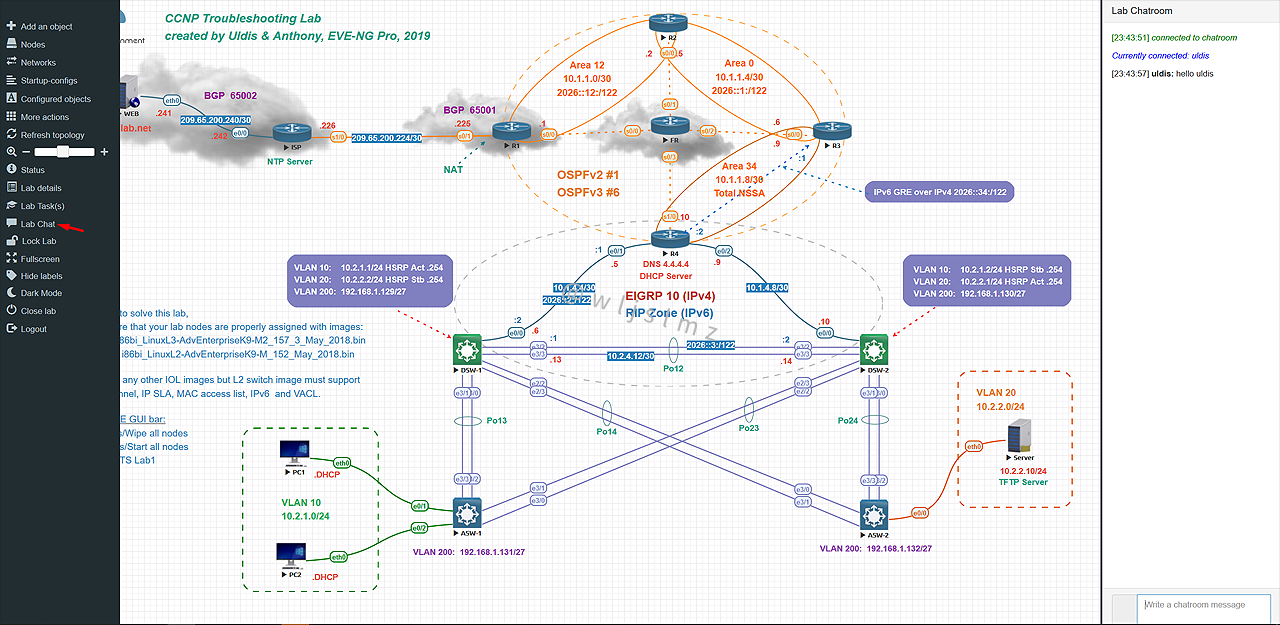
EVE-NG (Emulated Virtual Environment – NextGeneration) is the new version 2.0 of Unetlab, renamed from Unified Networking Lab. I think the renaming is quite reasonable; this simulator can not only simulate network devices, it can also run any virtual machines. Theoretically, as long as the virtual disk format can be converted to qcow2, it can be run on EVE-NG. Hence, EVE-NG can be considered an emulated virtual environment.
EVE-NG was developed by foreign experts, integrating dynamips, IOL, and KVM. It is a deeply customized Ubuntu operating system that can be installed directly on physical hosts with x86 architecture. It also has an OVA version that can be imported into VMware and other virtualization software to run.
EVE-NG has an advantage in interactive mode, which is distinctly different from GNS3. GNS3 is more like a user-oriented software where only OS supported by GNS3 can be used; while EVE-NG is more like a CS model, EVE-NG is the server side, and the client can be any OS supporting http/https.
Official Website of Cisco Packet Tracer
https://www.eve-ng.net/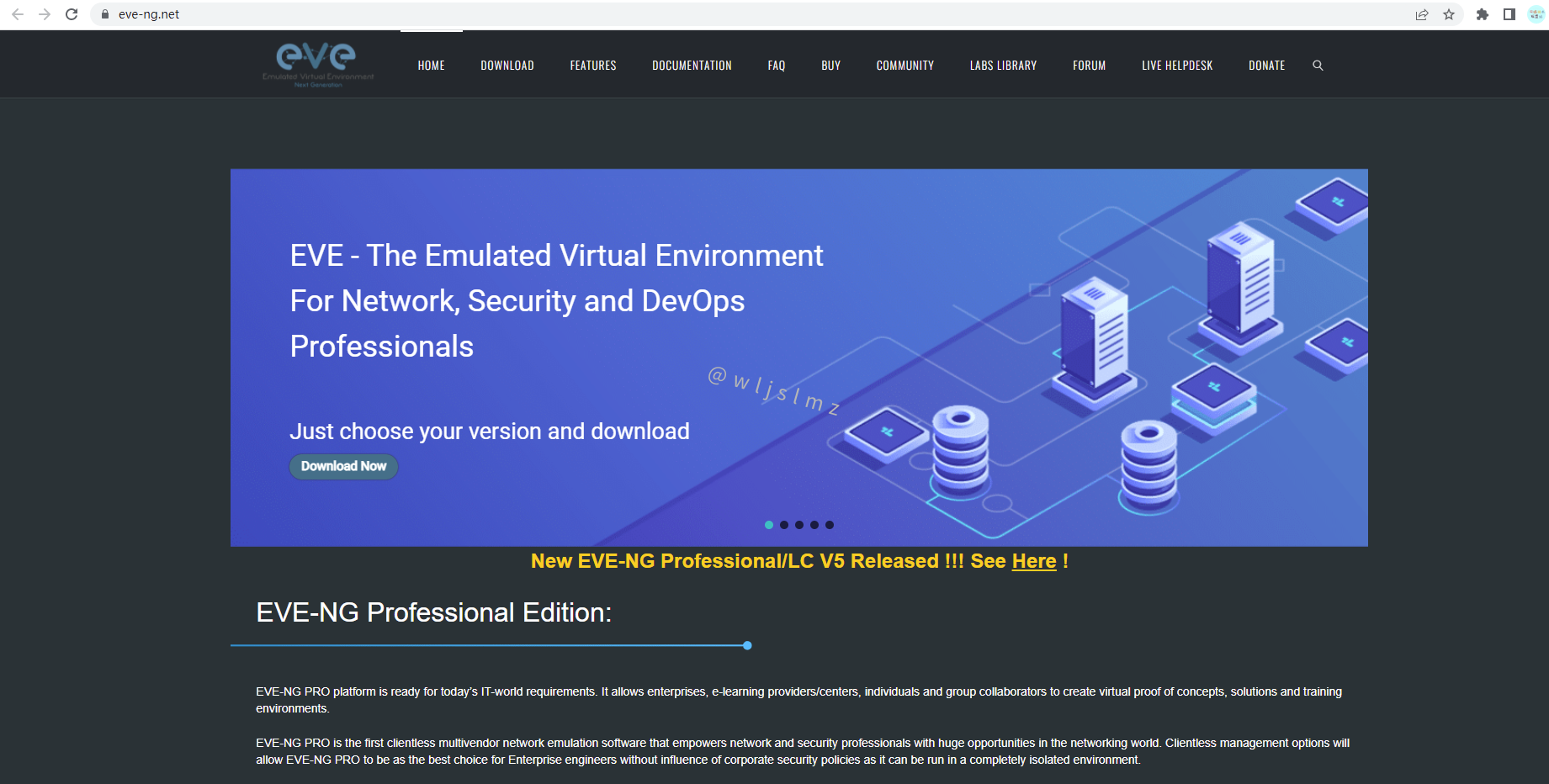
You can download it from this interfacehttps://www.eve-ng.net/index.php/download/:

It can be seen that the latest version on the official website is: 5.0.1-20
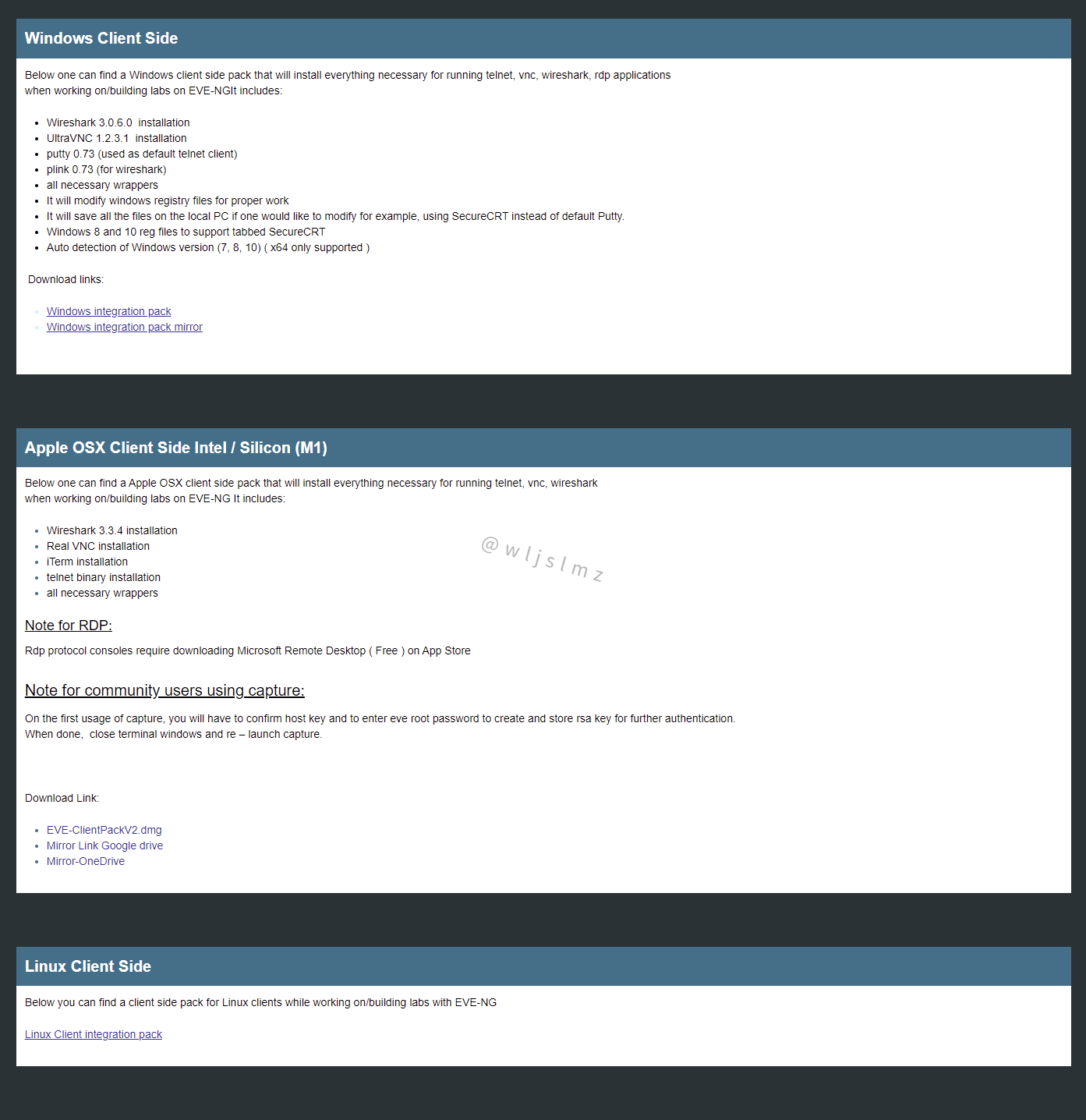
It also supports Windows, Linux, and Mac.
Similarly, if you find the download slow, you can get it at the end of the text.
Like GNS3, Linux requires you to install via command, and the specific installation method can be found on the GitHub pagehttps://github.com/SmartFinn/eve-ng-integration.
I’ll outline it here.
If you are using Ubuntu and its derivatives, then:
sudo add-apt-repository ppa:smartfinn/eve-ng-integration
sudo apt-get update
sudo apt-get install eve-ng-integrationIf you are using Arch Linux, Manjaro, Fedora, openSUSE, or CentOS systems, then:
wget -qO- https://raw.githubusercontent.com/SmartFinn/eve-ng-integration/master/install.sh | shThis method installs via script.
4. eNSP
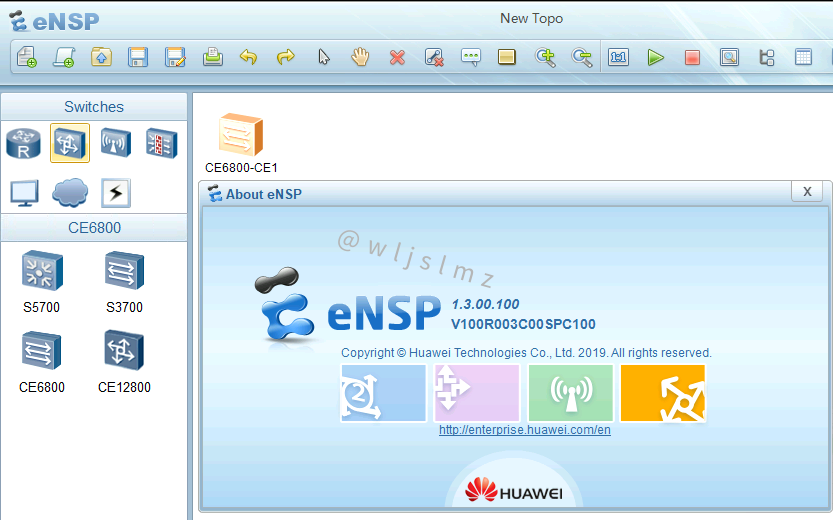
eNSP (Enterprise Network Simulation Platform) is a network simulation tool platform developed by Huawei that is scalable and has a graphical operation interface, mainly used for software simulation of enterprise network routers and switches, perfectly presenting realistic device scenarios and supporting large-scale network simulation. It gives users the opportunity to simulate practice and learn networking technology without real devices.
Currently, Huawei has ceased updating and no longer provides official download links, the specific reason is unspecified.
I will share the specific installation packages in a compilation at the end of the article.
Here are some commonly used eNSP commands:
system-view //Switch from user mode to system configuration mode
display this //Show the setting information of the current position, very convenient to understand system settings
display //Show port related information
shutdown //After entering a port, you can close the port using shutdown
undo //Execute an operation opposite to the one commanded, e.g., undo shutdown is to open the port
quit //Exit the current state
sysname //Change the device's name
interface eth-trunk 1 //Create aggregation port 1 (if already created, it's an entry)
interface GigaBitEthernet 0/0/1 //Enter the setting state of Gigabit Ethernet port 1
ip address 192.168.0.10 24 //Set the IP address, 24 represents the 24-bit network number
vlan 10 //Enter the configuration status of vlan 105. HCL
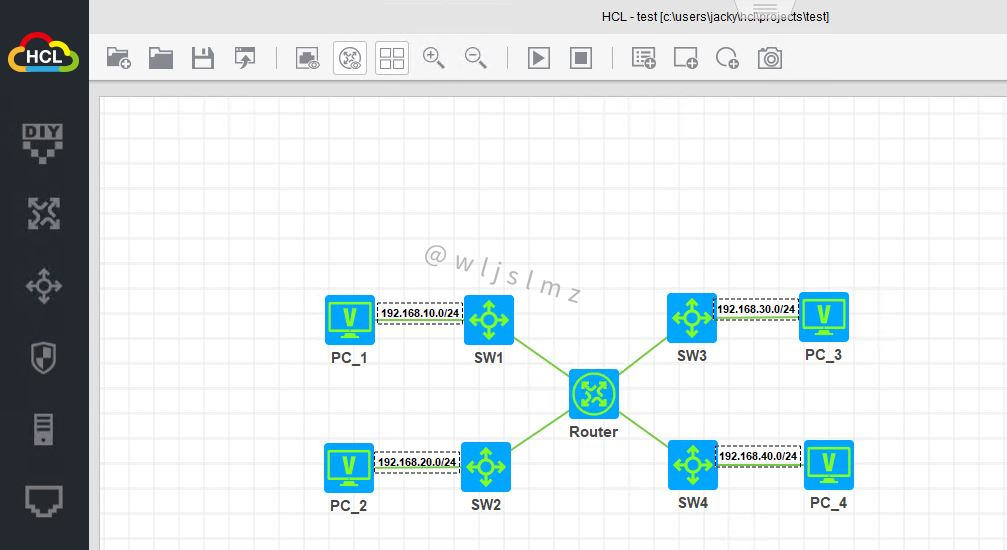
H3C Cloud Lab HCL Simulator is a graphical interface genuine network device simulation software. Users can use this software to achieve virtual networking, configuration, and debugging of various H3C devices. This software has a friendly graphical interface and can simulate routers, switches, firewalls, and other network devices, as well as all functions of PCs. Users can use it to build a virtualized network environment on a personal computer.
Official Website of Cisco Packet Tracer
https://www.h3c.com/If you want to download, you can directly visit: http://www.h3c.com/cn/Service/Document_Software/Software_Download/Other_Product/H3C_Cloud_Lab/Catalog/HCL/:
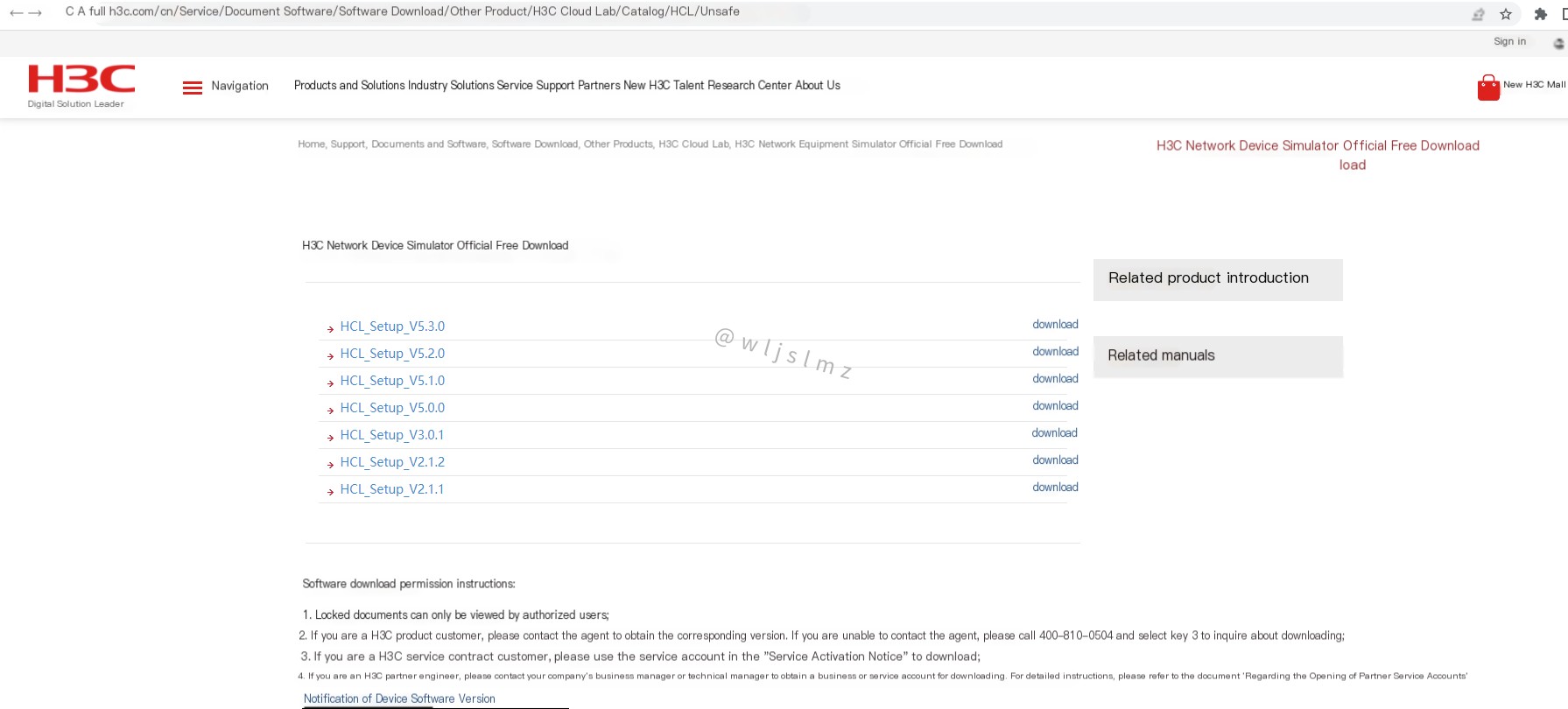
Similarly, I will share the latest version of HCL (5.3.0) in a compilation!
If you need another version, you can download it yourself.
6. PNETLab
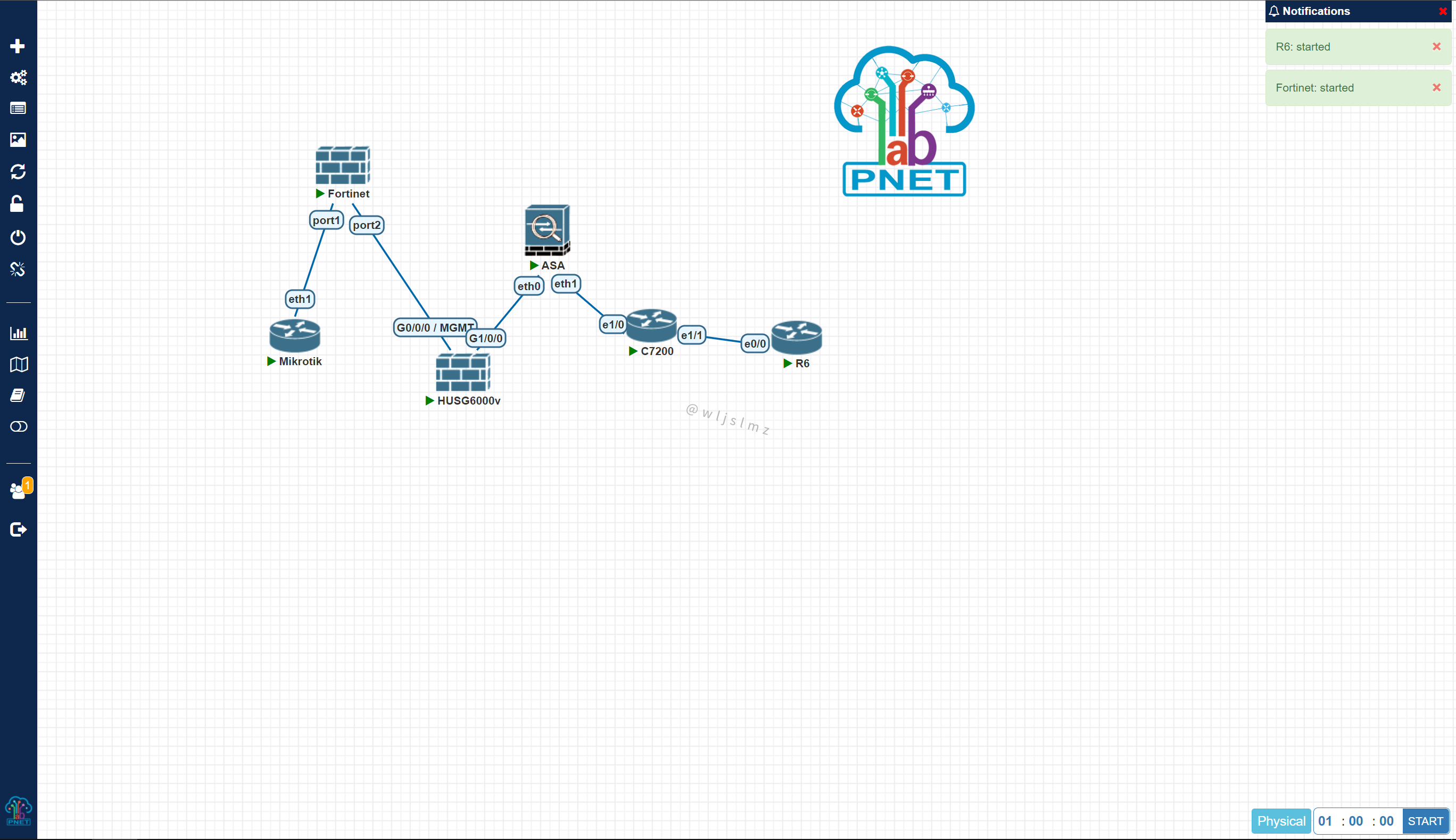
PNETLab, whose English full name is Packet Network Emulator Tool Lab, when translated literally into Chinese, means a packet network simulation tool lab. It is similar to Huawei’s eNSP and Cisco’s EVE simulators, and it includes PNETLab Box and PNETLab store.
PNETLab Box (with offline and online modes) is a virtual machine installed on a local machine, and the Lab will run on it, so you don’t need to worry about the speed of the lab. PNETLab Store is a web platform with hundreds of free labs in the fields of networking, databases, systems, etc. What you need to do is get the Lab and learn (IOS, Docker are included in labs downloaded from PNETLab) Anyone who has used simulators knows that Cisco-related experiments are generally done using EVE, GNS3, or PT; Huawei-related ones are generally done using eNSP, though lately eNSP is no longer being updated and maintained, but it’s still usable. In the future, there should be a more flashy Huawei simulator coming out, currently under development. For H3C experiments, HCL is commonly used.
PNETLab is actually similar to EVE; you need to load it into a virtual machine, and the loading process is identical to that of EVE. How EVE is loaded is how PNETLab is loaded.
PNETLab Features:
- This simulator is very similar to EVE, and it is prettier and more powerful than EVE, covering many components
- It can simulate various network devices such as Cisco, Juniper, VMware, and other vendor devices
- Supports various operating systems such as Windows, Ubuntu, Centos, Macos
- It can also run monitoring/cloud computing operating systems like Zabbix, OpenStack
- It can collaborate with Wireshark, VMware to enhance the degree of virtual network simulation
- Can run IOL (Cisco IOS on Linux), Dynamips, Quem images
- Supports online experimental topology download and use, saving you from the hassle of looking for experiment topologies
Official Website of Cisco Packet Tracer
https://www.pnetlab.com/pages/mainIf you need to download, you can directly visit the pagehttps://pnetlab.com/pages/download:
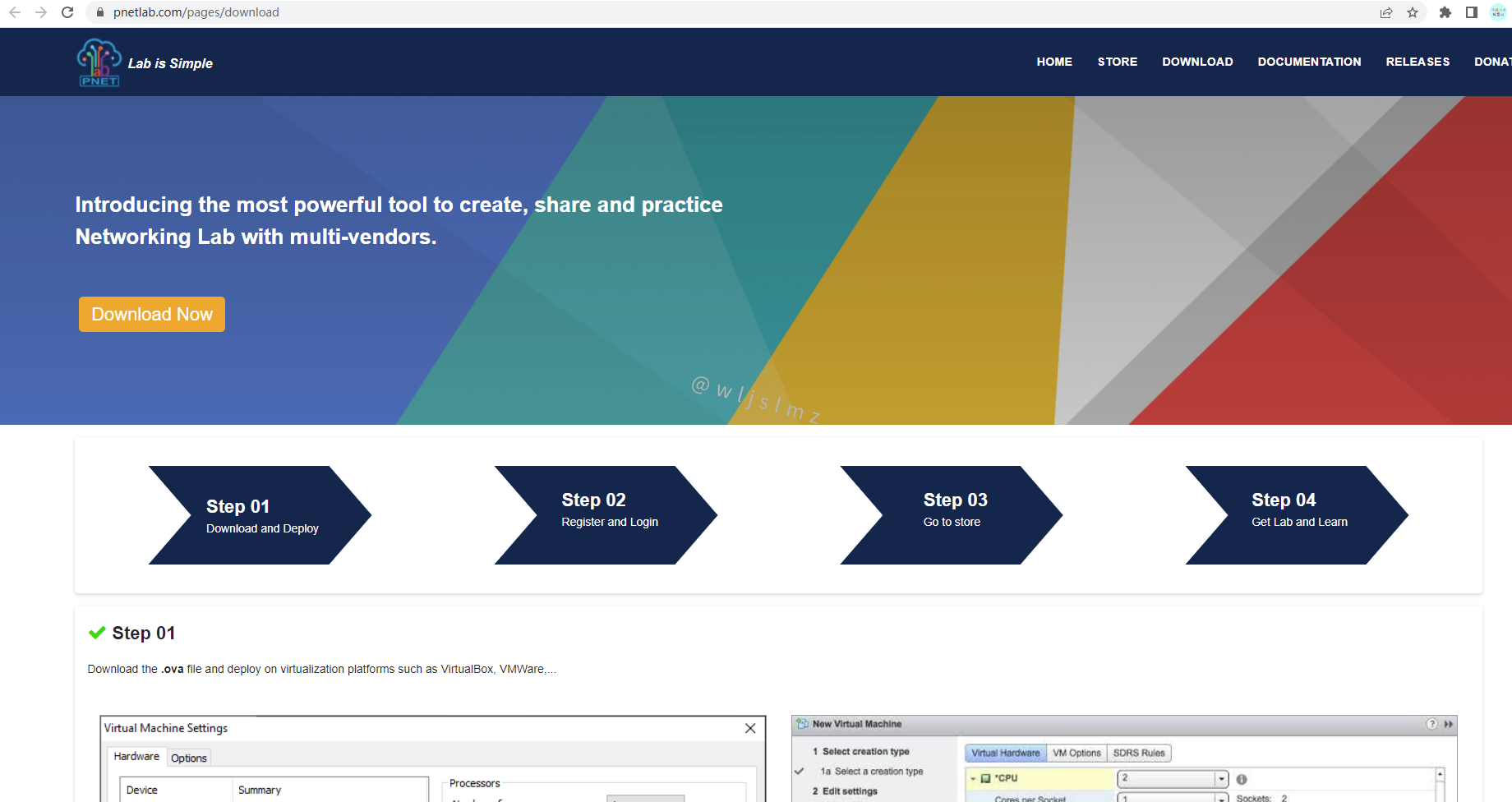
You can see that the installation consists of four steps:
- Download and Deploy
- Register and Login
- Go to store
- Get Lab and Learn
You can follow the installation instructions on the download page for step-by-step installation, it’s not difficult!
If you really can’t install it, you can check out the second article in today’s tweet. This article was previously written, but was manually circumvented by me due to a certain incident. I have made appropriate modifications and released it again today.
Friends who are used to using PC versions can directly visit my blog for step-by-step installation, the address ishttps://www.wljslmz.cn/19679.html.
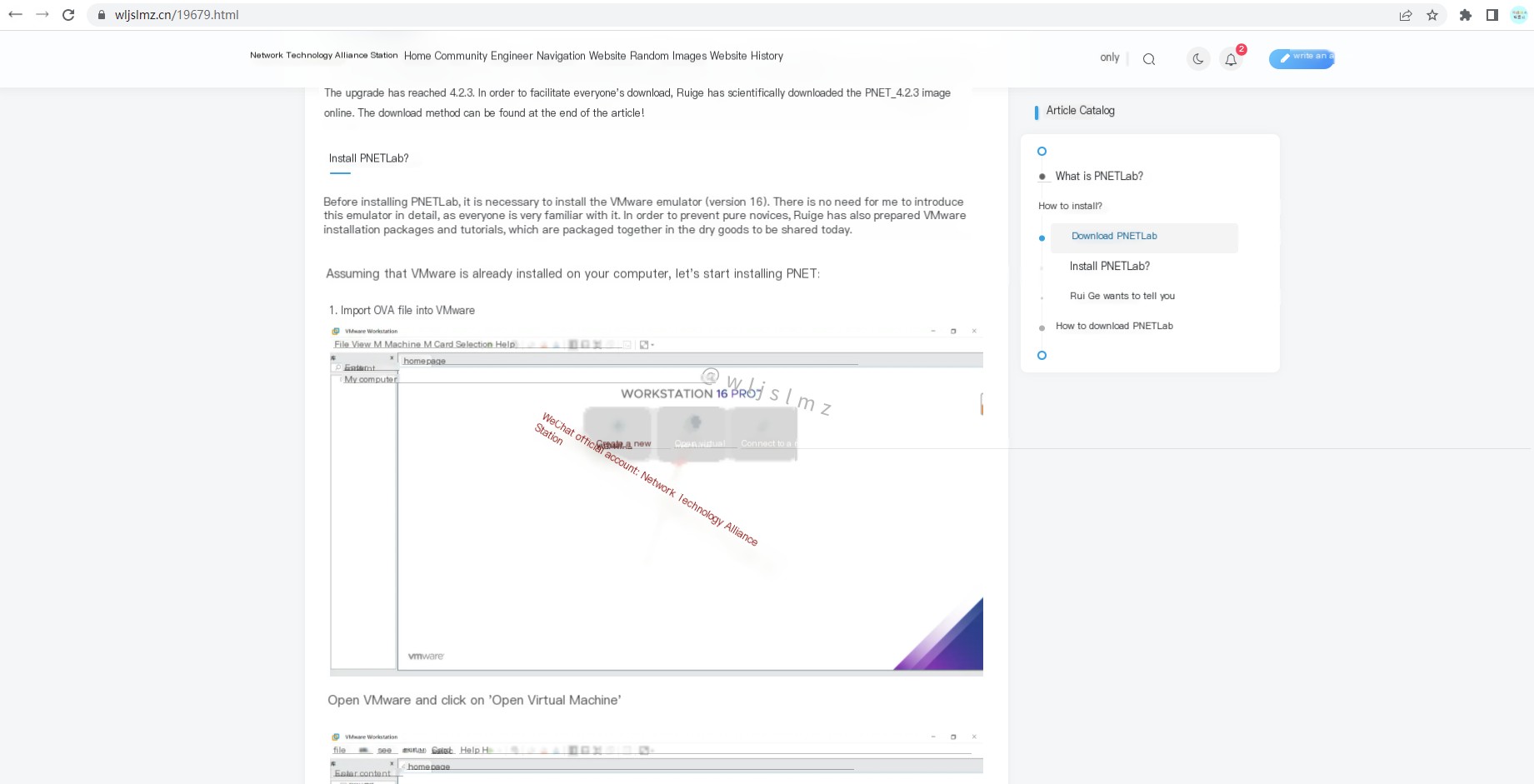
Here I’ll provide the .ova file involved in the first step (version is the latest 4.2.10), packaged at the end of the article.
7. Various Simulator Downloads

- eNSP
– eNSP V100R003C00SPC100 Setup.zip
– VirtualBox-5.2.28-130011-Win.exe
– WinPcap_4_1_3.exe
– wireshark3.0.0.zip - EVE-NG
– EVE-ClientPackV2.dmg
– EVE-NG-Win-Client-Pack-2.0.exe - GNS3
– GNS3-2.2.34-all-in-one-regular.exe
– GNS3-2.2.34.dmg - HCL
– HCL_v5.3.0.rar - Packet Tracer
– Cisco Packet Tracer Chinese Perfect Version.rar - PNET
– PNET_4.2.10.ova
How to download?
You can Baidu search for this article, and there will be an introduction. The cloud community does not allow setting external links.



